 'Make us a component part of your business'
'Make us a component part of your business'
OMEG E16 (ECO) POTENTIOMETER DATA
This page provides the electrical and mechanical specification for the E16 (ECO) product range of Omeg rotary potentiometers.
The electrical specification is split into unique and common
attributes to highlight the difference between the 16mm and 20mm size
of potentiometer.
- E16 (ECO) Mechanical specification
- Electrical specification - Unique to E16 (ECO) potentiometers
- Effective rotation
- Rated power dissipation
- Limiting element voltage
- Insulating Voltage
- Electrical specification - Common to 16mm and 20mm potentiometers
- Insulation Resistance
- Rated Resistance
- Tolerance on Rated Resistance
- Resistance Laws (A=Linear, B=Log, C=Reverse/Anti Log)
- Linearity
- Matching Tolerance (For Tandem Stereo Potentiometers)
- Operating Temperature
- Temperature Coefficient of Resistance
Go to
E16 (ECO) Potentiometer Dimensions for the potentiometer bush and spindle dimensions; and
E16 (ECO) MECHANICAL SPECIFICATION
Operating Torque: 0.4 - 1.5 Ncm
Permissable Axial Spindle Load: 50 N (5 Sec. maximum)
Permissable Torque at End Stop: 35 Ncm
Rotation angle: 300° ±5°
Click Stop facility available on certain models
ELECTRICAL SPECIFICATION - UNIQUE TO E16 (ECO) POTENTIOMETERS
Effective rotation:
- Without a switch: 267° nominal
- With pushpush switch (/10APP, /MS): 267° nominal
- With rotary switch: 232° nominal
Rated Power Dissipation @40°C for 16mm potentiometers:
- 0.25W linear law
- 0.12W non linear law
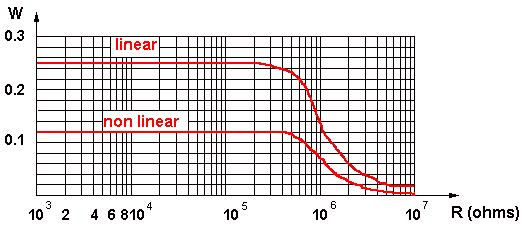
Limiting Element Voltage: 350 V DC for 16mm potentiometers
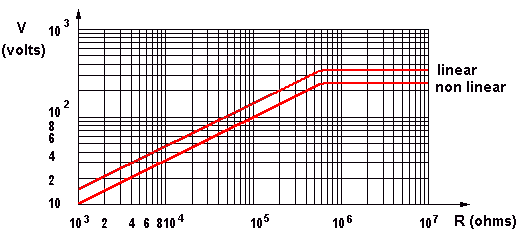
Insulating Voltage: 500 V AC for 16mm potentiometers
ELECTRICAL SPECIFICATION - COMMON TO 16mm AND 20mm POTENTIOMETERS
Insulation Resistance: >= 4 Gohms
Rated Resistance: E3 Series
- Optional: E6 Series
- Linear Law: 1K - 1M
- Non linear Law: 4K7 - 470K
Tolerance on Rated Resistance: ± 20%
- Optional Tolerance on 1K - 1M: ± 10%
Resistance Laws:
- Linear: A
- Non linear: B (Log) or C (Reverse/Anti Log)
- Other laws: Please refer to Sales office
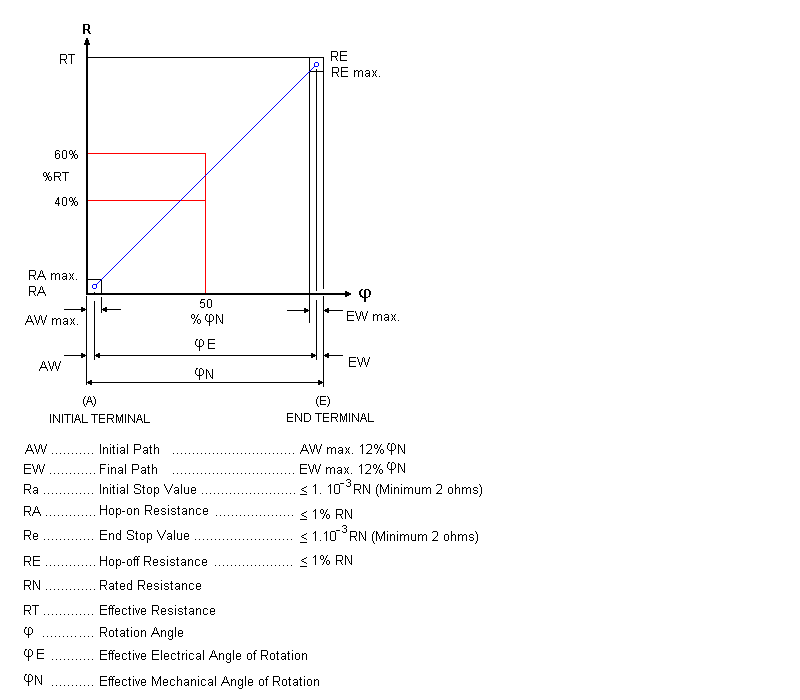
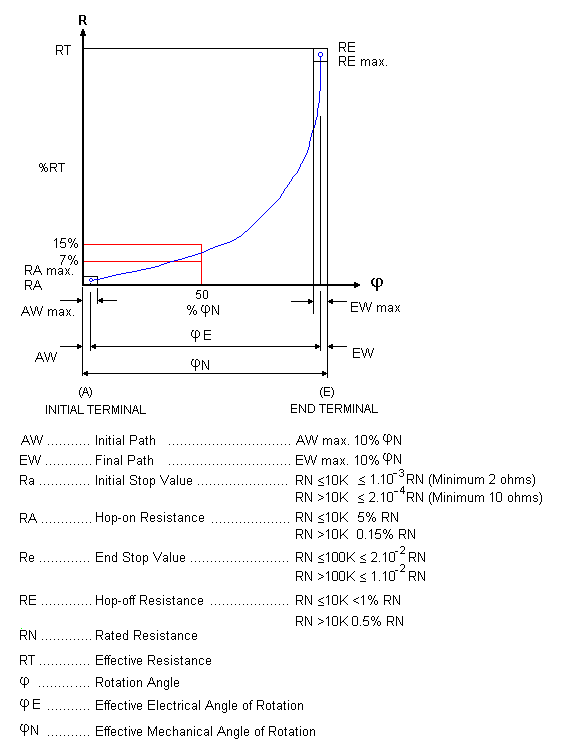

Linearity
As a basis of assessing Linearity Tolerance the independent method is the most practical,
permitting as it does, the reference curve to be aligned as near as possible to
the actual output curve. This avoids the use of the theoretical starting and finishing
points, it is normal for the customer to realign the achieved curve with series
trimmers at each end of the device if required.
Linearity Tolerance is 4% over the Nominal Resistance range of 1K0 to 1M0.
The Linearity Tolerance is measured on at least 70% of the effective rotation
range.
Note. In the case of Terminal and Zero-based linearity, both present constraints
which increase the manufacturing difficulty and in consequence have an adverse effect
on the product's price and availability.
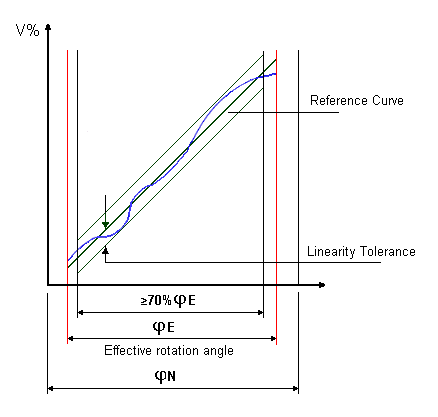
Matching Tolerance (For Tandem Stereo Potentiometers)
Tandem Potentiometers have two identical resistor units with the same variation
law. The mismatching of the two resistor units, expressed in dB, is measured by the
difference between the attenuations introduced by each resistor unit at various
points of travel.
- Law A: 4 dB at Attenuation range 0 - 20 dB
- Law B and C: 3 dB at Attenuation range 0 - 20 dB
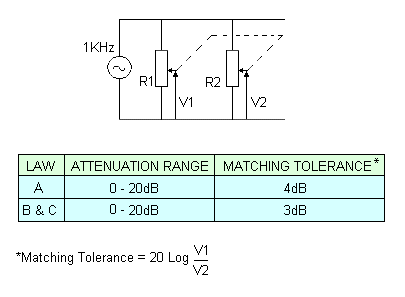
Operating Temperature: -25°C to +70°C

Temperature Coefficient of Resistance: +300 -500 ppm
Life: >= 20,000 cycles
 'Make us a component part of your business'
'Make us a component part of your business'







